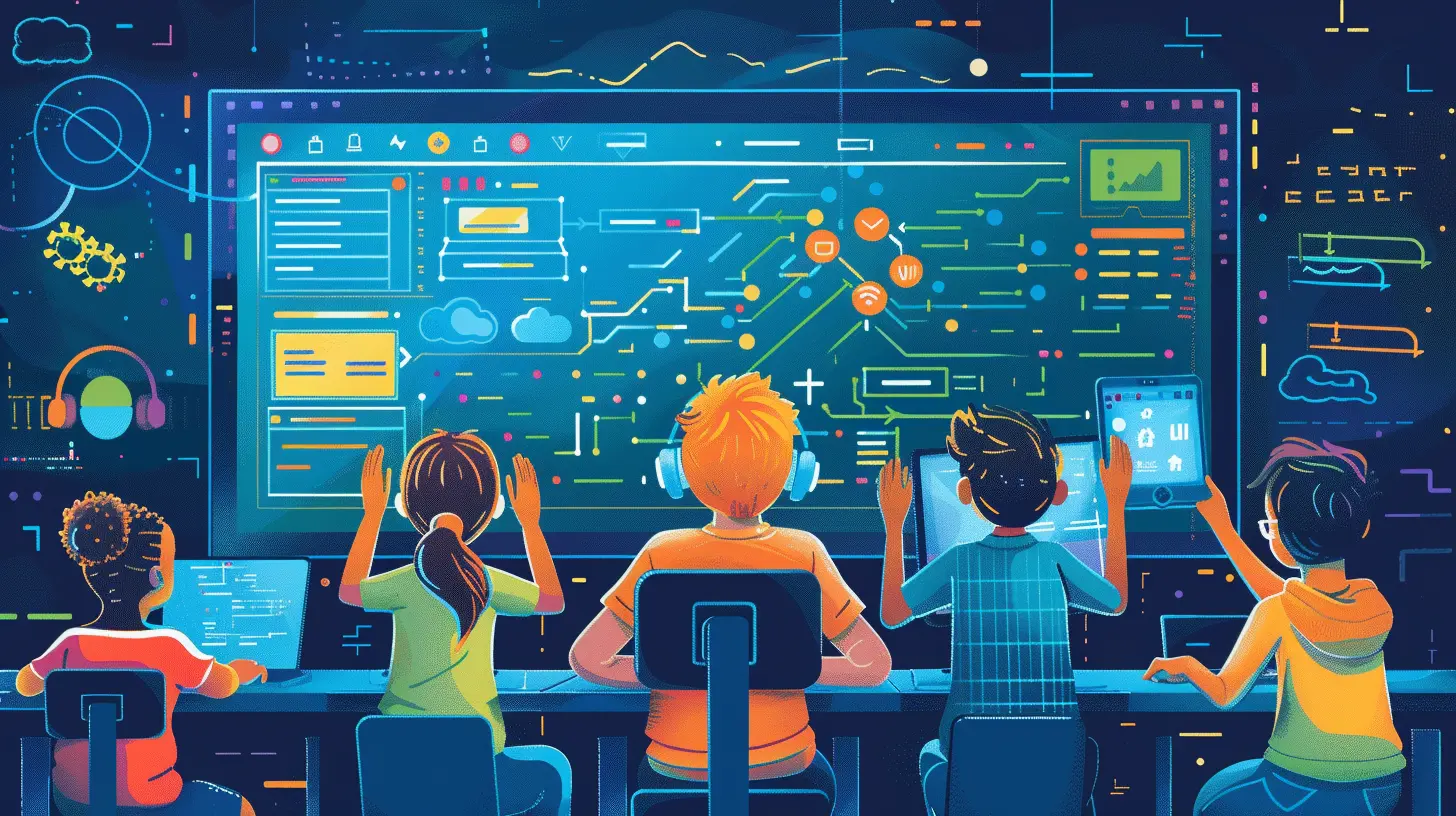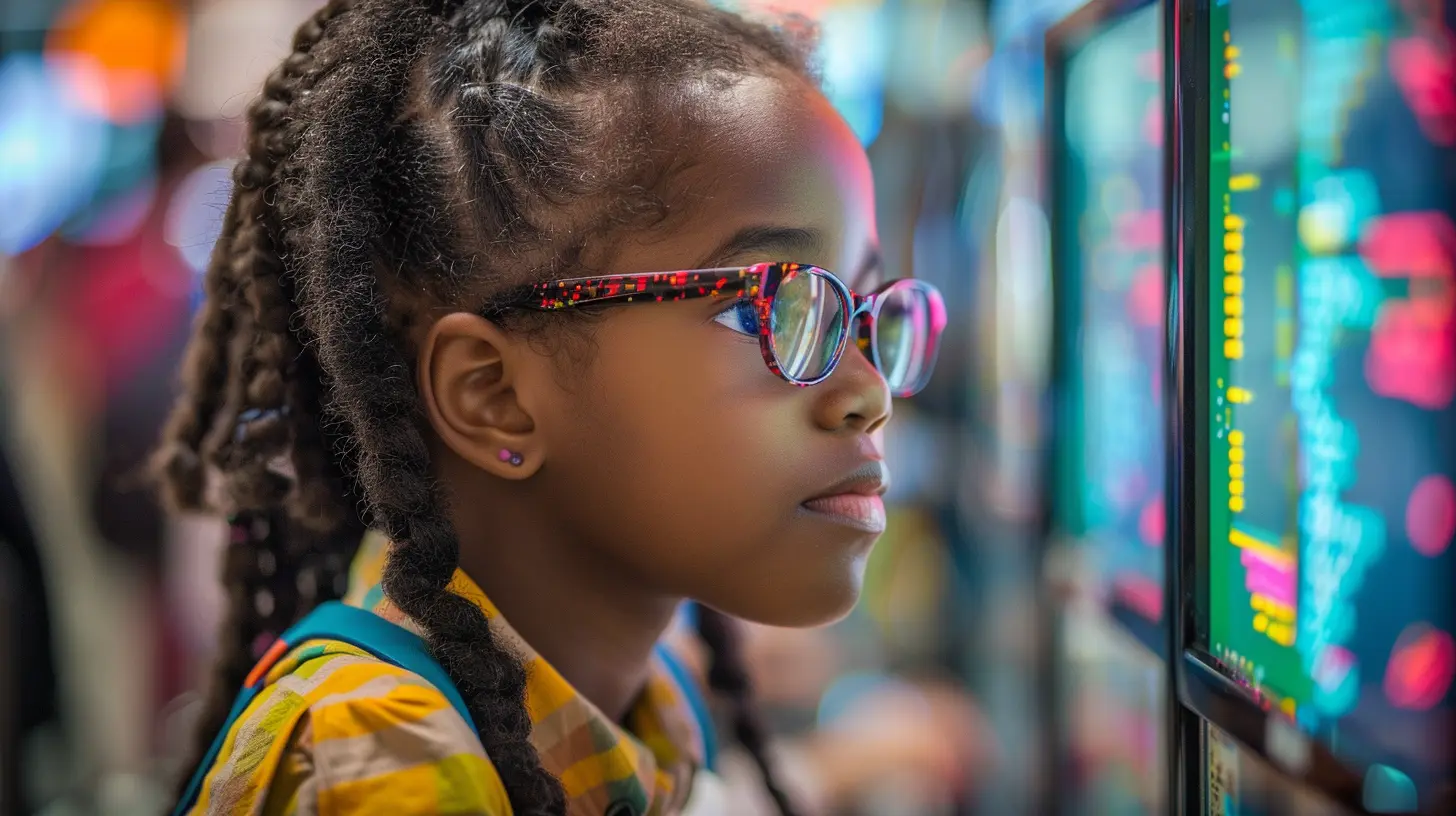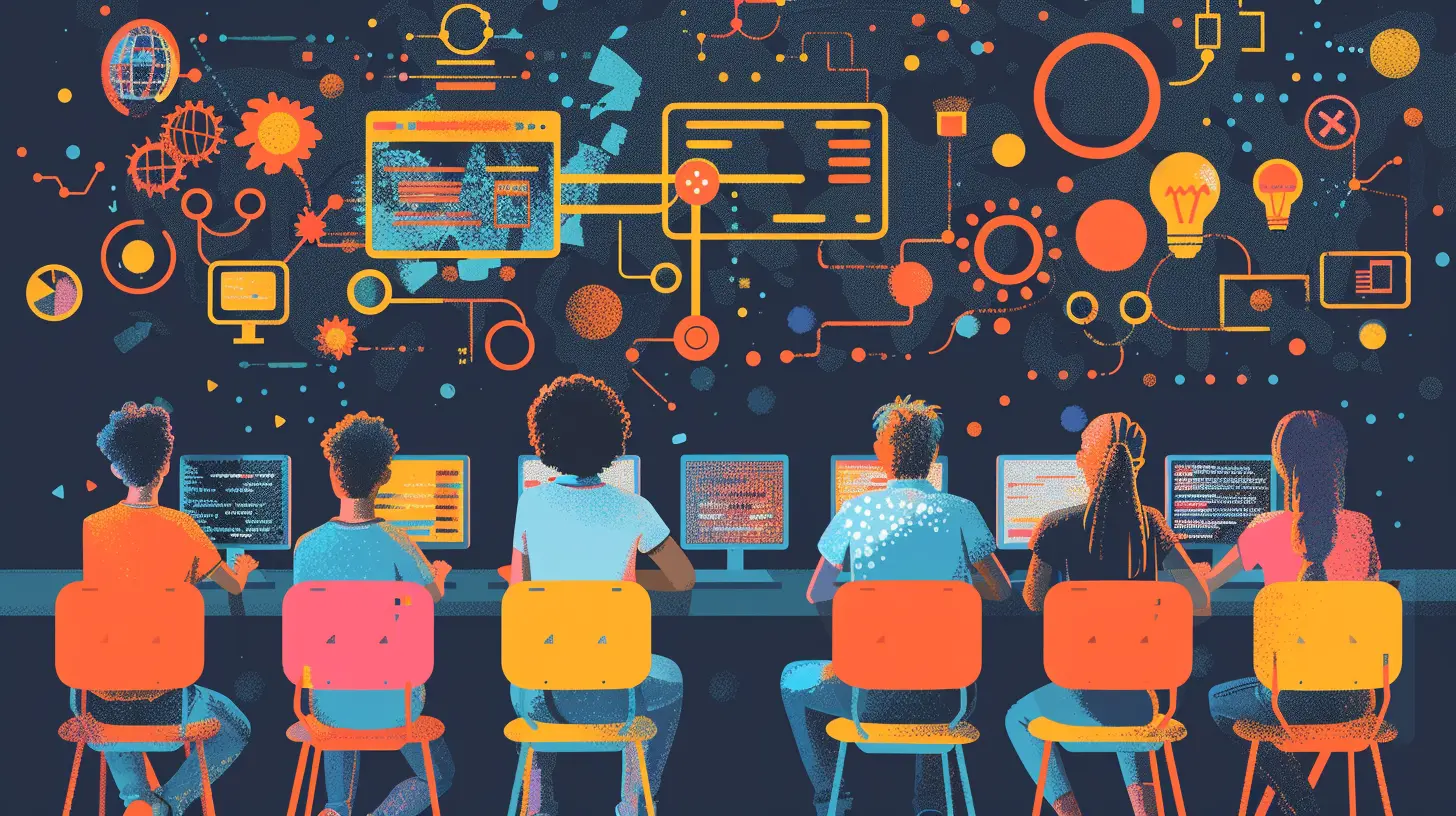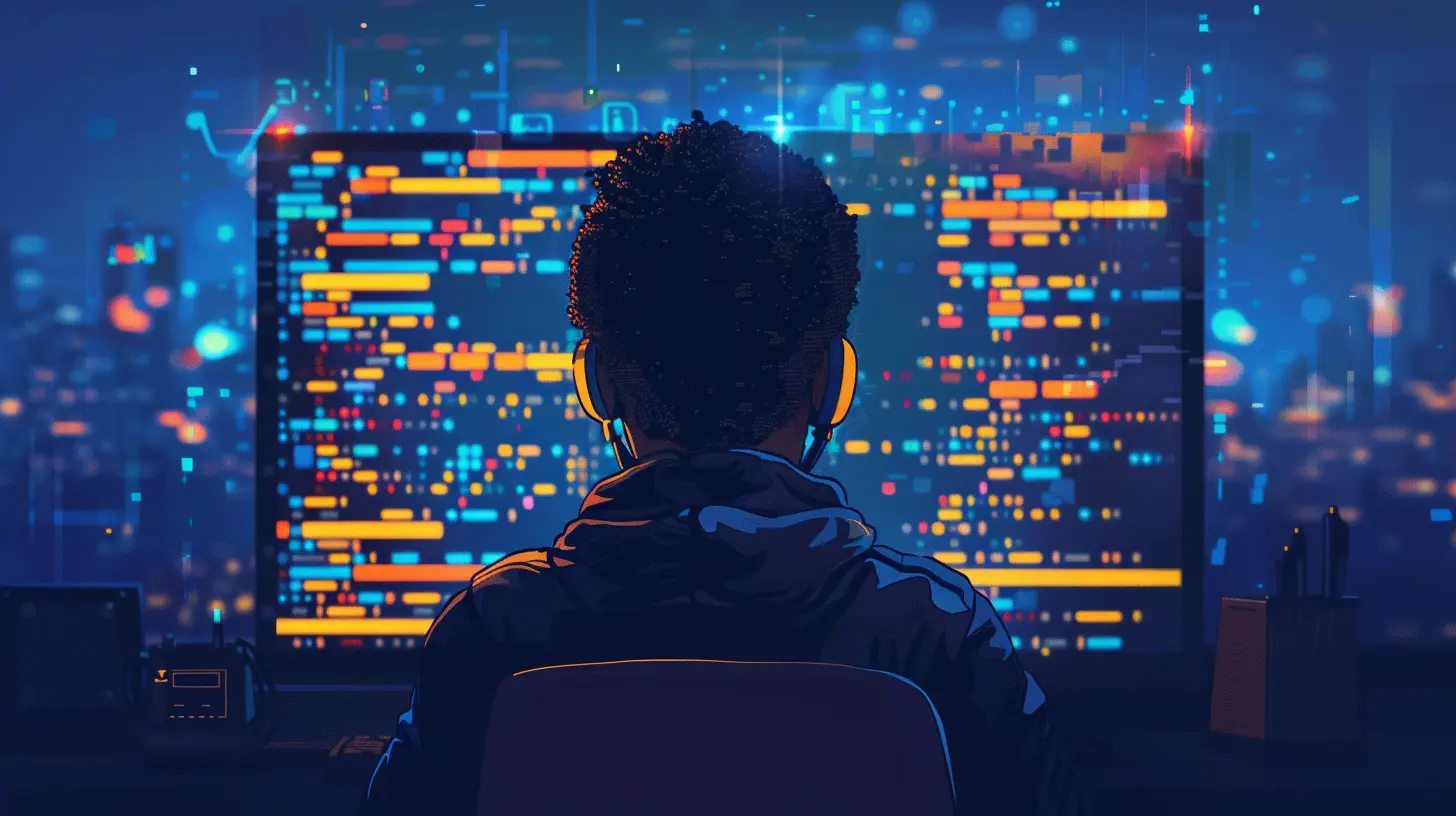Why Coding Should Be a Core Skill for All Students
6 August 2025
Let’s face it—our world runs on code. From your smartphone alarm app to the GPS guiding you home, coding is silently working behind the scenes. Yet, we treat it like some elite knowledge reserved for the techies. The truth? Coding should be as common as reading, writing, and math. It’s not just for computer scientists or engineers anymore. It's a core skill. And it’s high time we treat it like one—especially in education.
So, if you're still on the fence about teaching kids how to code, buckle up. We're diving into exactly why every student—regardless of age, background, or future aspirations—should have coding in their toolkit.
What Is Coding, Really?
Before we get too far ahead, let’s break it down. Coding—also called programming—is basically giving commands to a computer to perform specific tasks. Think of it like teaching a dog new tricks, only your “dog” is a machine and your “trick” could be anything from solving math problems to animating a character in a video game.It's how we build websites, apps, software, video games, and even operate robots. And with how tech-driven the world is today, it's pretty much the language of the future.
The Digital Age Demands Digital Literacy
Do you remember when typing was considered a “bonus skill” in school? Fast forward to now—it’s vital. Coding is going down the same road. We live in a hyper-connected, digital-first world. Even if you don’t want to be a programmer, understanding how tech works on a basic level is becoming non-negotiable.Imagine students graduating without even a clue about how the systems they use every day function. That’s like giving someone a car without teaching them the rules of the road. Dangerous, confusing, and definitely not smart.
Coding Breeds Problem-Solving Skills
One of the most powerful side-effects of learning to code? It trains your brain to think clearly and logically. Coding is all about breaking down big problems into bite-sized steps and solving them methodically.Take debugging, for instance. It’s when you find and fix errors in your code. To do that, you’ve got to analyze your work, test out different solutions, and persist even when it's frustrating. Sound familiar? Yep, just like real life.
Coding helps students learn how to troubleshoot, persist through failure, and approach problems from different angles. These are universal life skills, folks.
It Sparks Creativity Like You Wouldn't Believe
Most people think of coding as this dry, mathematical, robotic thing. But here’s the secret: it's actually wildly creative. You start with a blank screen and just a blinking cursor. From there, you can build a game, design an app, or create an interactive story.Coding is like digital Lego. Want to build a world where cats shoot lasers? Go for it. Dreaming of an app that helps people recycle more efficiently? You can make it happen.
When you give students the power to code, you’re handing them the keys to their own creative kingdom.
Career Opportunities Galore
Let’s talk jobs. Coding skills open the doors to some of the fastest-growing, highest-paying careers out there. It’s not just about becoming a software developer—coding is useful in data science, design, marketing, business analysis, healthcare, fintech, and countless other industries.And get this: many of tomorrow’s jobs haven’t even been invented yet. But one thing’s for sure—knowing how to code will give students a serious head start in pretty much any field they choose.
Schools should be preparing students for their future, not the past. And coding is a huge part of that.
Coding Encourages Collaboration
Ever heard of GitHub? It’s kind of like the social network for coders. People around the world collaborate on projects, share their code, and give feedback to others. Coding is rarely a solo game.When students learn to code, they also learn to work together. Whether they’re troubleshooting a bug as a team, pair-programming, or collaborating on a group project, they're developing teamwork skills right alongside technical ones.
And let’s be honest, in today’s world, soft skills like communication and collaboration are just as important as hard skills.
Prepares Students for a Tech-Driven Society
We’re surrounded by tech. Smart homes, AI assistants, automated cars—you name it. Understanding how these technologies work isn’t just cool—it’s empowering.When students learn to code, they stop being just consumers of technology and start becoming creators. Instead of asking, “How does this work?” they start thinking, “How can I build this?”
That kind of mindset shift is huge. It plants seeds for innovation, entrepreneurship, and critical thinking.
Coding Is Inclusive—If We Let It Be
Here’s an important one: coding can level the playing field. With the right tools and access, anyone can learn it. Race, gender, income—none of that has to be a barrier.But we’ve got to start early. Studies show that by middle school, many girls and underrepresented groups already start losing interest in STEM fields. If we integrate coding into the curriculum early, we normalize it. We make it accessible. We show kids of all backgrounds that they belong in the tech world.
A diverse coding community benefits everyone. Different perspectives lead to better designs, fairer technologies, and more inclusive solutions.
It Complements Other Subjects
Think coding is just for tech class? Think again.Coding reinforces math—think logic, sequencing, patterns. It enhances writing through storytelling and structure. It supports science with simulations and data visualization. Even art and music have coding angles (ever heard of generative art or beat-making algorithms?)
When integrated across subjects, coding doesn’t compete—it complements. It turns abstract concepts into interactive, hands-on experiences. That’s a win-win for students.
Teaching Coding Builds Teacher Skills Too
Let’s not forget the educators. Integrating coding into the classroom isn’t just good for students—it’s professional growth for teachers too. It pushes them to learn new technologies, adapt to digital tools, and lead by example.There are tons of resources out there now: free online courses, coding bootcamps for teachers, plug-and-play platforms like Scratch and Code.org. You don’t need to be a tech genius to start teaching it.
And let’s be real—students love seeing their teachers learning alongside them. It creates a collaborative, growth-focused classroom vibe that benefits everyone.
The Earlier, The Better
Waiting until high school or college to teach coding? That’s too late.Young kids are curious, fearless, and great at soaking up new information. Introducing coding early taps into that natural creativity and sets a strong foundation. Plus, it demolishes the “I’m not a computer person” mindset before it even forms.
Tools like ScratchJr and Blockly let little ones drag and drop their way through code concepts—no typing required.
It's like learning a new language: the earlier you start, the more fluent you become.
Removing the “Mystery” from Tech
A big reason why so many people shy away from coding is because it feels mysterious, even intimidating. Like there's a secret code only the tech elite know.But that’s not true. Coding is just a skill—and like any skill, it can be taught, learned, and mastered with practice. The more students engage with it, the less scared they are of technology in general.
And when you remove fear, you create room for curiosity. That curiosity? It's the fuel for all great innovations.
Real-World Projects = Real-World Confidence
When students are able to build something tangible—like an app, game, or website—the confidence boost is unreal. It’s the difference between passive learning and active creation.Imagine a student who doesn’t like math, but then uses code to make a calculator app. Suddenly, math has a purpose. It’s not just numbers on a test—it’s a means to build something real.
Coding gives context to so many school subjects. And that context? It makes learning stick.
Making It Happen: What Schools Can Do
Okay, you’re probably convinced by now. But how do we actually make coding a core skill in schools?A few key moves:
- Start Early: Integrate coding into elementary curriculum through games and storytelling.
- Make It Cross-Curricular: Don’t lock it in computer class—use it in math, science, art, and beyond.
- Train the Teachers: Give educators the time, tools, and support to learn coding confidently.
- Prioritize Equity: Ensure all students have access, regardless of background or resources.
- Focus on Creativity and Fun: This isn’t about exams or rote memorization. Let kids build stuff they care about.
It’s not about replacing traditional subjects—it’s about enhancing them. And future-proofing our kids in the process.
Final Thoughts
Coding isn’t just another “nice-to-have” skill. It’s the vocabulary of the future, the toolkit for tomorrow's problems, and the bridge between consuming and creating technology.If we truly want to prepare students to thrive in a tech-driven world, coding needs to be right up there with reading, writing, and arithmetic. Not tomorrow, not next year—right now.
So the real question isn't “Why teach coding?”
It’s *“Why on Earth wouldn’t we?
all images in this post were generated using AI tools
Category:
Stem EducationAuthor:

Monica O`Neal
Discussion
rate this article
1 comments
Runeveil McClure
Coding fosters critical thinking and creativity, essential skills for navigating our digital future.
August 10, 2025 at 11:27 AM

Monica O`Neal
Absolutely! Coding not only enhances problem-solving abilities but also nurtures creativity, equipping students for success in our increasingly digital world.


